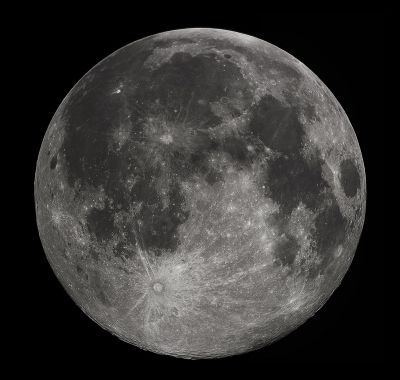The super harvest moon

Moon
By Gregory H. Revera (Own work) [CC BY-SA 3.0 (http://creativecommons.org/licenses/by-sa/3.0) or GFDL (http://www.gnu.org/copyleft/fdl.html)], via Wikimedia Commons
Did you catch the bright milky moon lighting up the sky earlier this week? This wasn’t just a beautiful harvest moon, it was actually a super harvest moon!
A supermoon – known by astronomers as a perigee full moon - occurs when
the moon comes closer to the Earth than normal allowing it appear 14 %
larger and 30 % brighter. This recent supermoon was the third this
summer, or as National Geographic calls it, the ‘last act in a cosmic
play’.
According to National Geographic, the moon was closest to the Earth
on the night of 7 September when the ‘silvery orb’ was a mere 358 398
kilometres from us sky-watchers. However the full phase of the moon
occurred officially occurred on 8 September.
What exactly are
the ‘cosmic mechanics’ of the supermoon? National Geographic explains
the supermoon phenomenon: ‘The moon orbits the Earth on an egg-shaped
orbit, with our planet sitting a bit off center. This means that once a
month in its orbit, the moon reaches its closest point to Earth, known
as its perigee. This is when the moon looks the largest in diameter. At
the same time, the moon is also at the point in its 28-day-long orbit
around the Earth that it passes opposite the Sun.’
Once in a while, a perigee and a full moon coincide to create a
perigee full moon or supermoon. This gives us a brighter and
larger-than-normal full moon. The opposite of a supermoon is a micromoon
which is when a full Moon occurs near the furthest part of the Moon's
orbit so that it appears smaller and dimmer than usual.
There is no need for us to fear anything from the epically-named
supermoon looming close to the Earth. Dr. James Garvin, chief scientist
at NASA's Goddard Space Flight Center, says that supermoons have only a
minor effect on our planet. He notes, ‘the Earth has stored a tremendous
amount of internal energy within its thin outer shell or crust, and the
small differences in the tidal forces exerted by the moon (and sun) are
not enough to fundamentally overcome the much larger forces within the
planet due to convection (and other aspects of the internal energy
balance that drives plate tectonics). Nonetheless, these supermoon times
remind us of the effect of our 'Africa-sized' nearest neighbor on our
lives, affecting ocean tides and contributing to many cultural aspects
of our lives (as a visible aspect of how our planet is part of the solar
system and space).’
September’s supermoon is particularly special because it’s also a
harvest moon. Although we usually associate the harvest moon with
autumn, this year's version is actually the last full moon of the summer
season. Discovery News tells us that the harvest moon is important
because instead of rising its normal average of 50 minutes later each
day, the moon rises only a little later each night, providing farmers
with extra moonlit evenings to reap their crops.
So this year’s super harvest moon provided a special treat for farmers and sky watchers alike!
published: 2015-01-23

